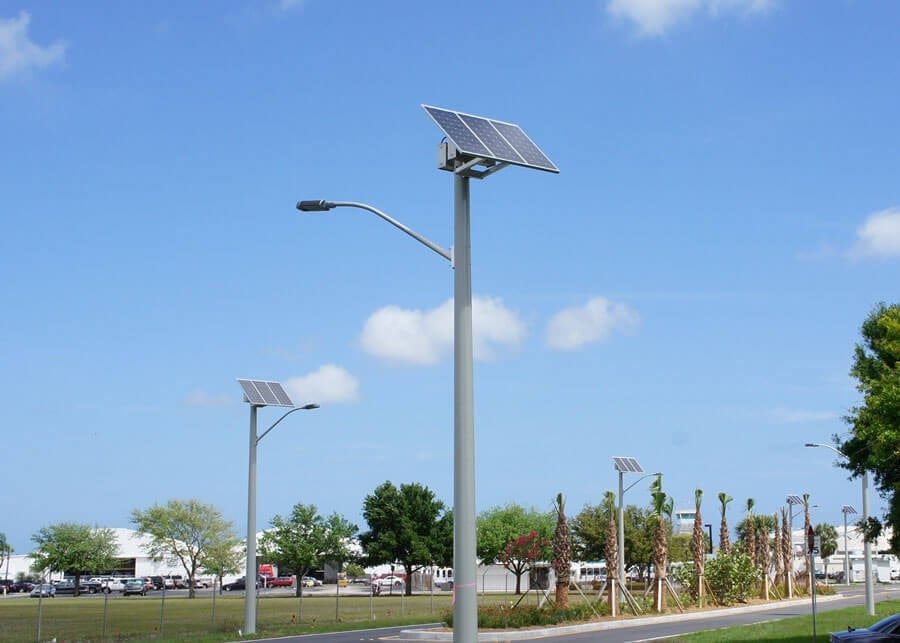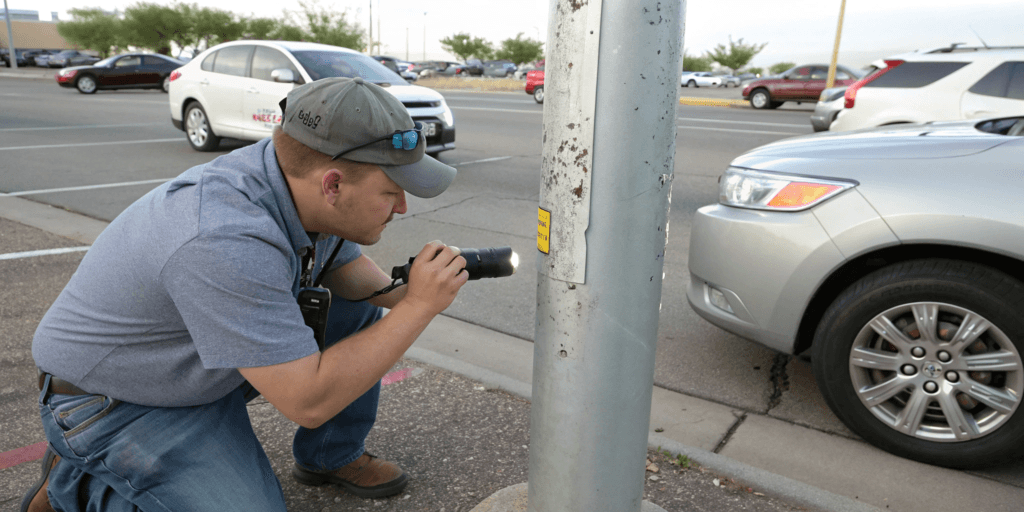You invested in solar lights, expecting free, hands-off lighting—and now they’ve stopped working? That’s frustrating.
Most solar light failures are caused by simple, fixable issues like bad batteries, dirty panels, or sensor errors. You can often repair them without tools.
In this guide, I’ll show you how to diagnose and fix your solar light step by step, even if you’re not tech-savvy.
How Solar Lights Work (Quick Refresher)?
It helps to know how solar lights operate before you dive into troubleshooting.
Solar lights use panels to collect sunlight, store it in batteries, and turn on LEDs at night with help from a light sensor.
Key Components of a Solar Light
Here’s what most solar lights include:
- Solar Panel: Converts sunlight into energy
- Rechargeable Battery: Stores power during the day
- LED Light: Provides illumination at night
- Photoresistor Sensor: Detects darkness and triggers the light
- On/Off Switch: Enables or disables the light manually
Each component plays a role—if one fails, the whole light may stop working.
How Solar Lights Charge and Illuminate
During the day, the panel converts sunlight to DC electricity and charges the battery. At night, when the panel stops receiving light, the sensor signals the battery to power the LED.
If charging is poor or the sensor malfunctions, the light may not turn on at all.
Quick Checklist When Your Solar Light Isn’t Working?

Before you take anything apart, go through the basics.
Most solar light issues are due to switches, shadows, or worn-out batteries—and you can fix them in minutes.
Is the Solar Light Turned On?
Obvious—but often overlooked.
- Look for a small switch on the back, underside, or battery compartment.
- Some models default to "OFF" out of the box.
If the light is new, check for a battery pull tab that might still be in place.
Is the Solar Panel Getting Direct Sunlight?
Shading reduces charging significantly.
- Make sure the panel is facing direct sunlight for at least 6 hours a day.
- Remove dirt, dust, or leaves.
- Avoid placing lights under trees or eaves.
Even light shadows throughout the day can reduce charging to near zero.
Are the Solar Light Batteries Charged or Dead?
Try this:
- Replace batteries with fresh rechargeable ones (NiMH or Li-ion depending on model).
- Avoid standard alkaline batteries—they can damage the circuit.
- If the light works after replacement, the old batteries were the problem.
Most solar light batteries need replacement every 1–2 years.
Common Solar Light Problems and How to Fix Them?
If the basics don’t solve the issue, let’s dig into common hardware problems.
Cleaning, replacing batteries, and checking wiring usually restores solar lights back to full function.
Dirty or Blocked Solar Panels
Even a thin layer of dirt can block sunlight.
How to Clean:
- Use a soft, damp cloth—no harsh chemicals.
- Wipe in circles to remove dust, grime, or bird droppings.
- For stubborn gunk, use mild soap and water.
Tip: Clean panels monthly for best performance.
Faulty or Expired Batteries
Batteries wear out with time or extreme temperatures.
Signs:
- Light flickers or dies quickly
- Doesn’t turn on even after sunny days
How to Replace:
- Open the battery compartment.
- Note the type and capacity (e.g., 1.2V NiMH AA 600mAh).
- Replace with the same type, not alkaline.
Sensor Not Detecting Darkness
The photoresistor controls the on/off switch based on ambient light.
Fixes:
- Cover the solar panel completely to simulate night.
- If the light turns on, the sensor works.
- If not, the sensor or battery may be bad.
Avoid placing lights near house lights or street lamps—they confuse the sensor.
Loose or Corroded Wiring/Connections
Open the casing and check:
- Are wires disconnected or rusted?
- Is the battery terminal green or white (corroded)?
Clean contacts with:
- A cotton swab and rubbing alcohol
- A small wire brush or sandpaper
Reconnect wires firmly and reseal the housing properly.
Water Damage in Solar Light Components
Water can get inside, especially in cheap units.
Check:
- Cloudy lens or water droplets inside
- Rust or corrosion in the battery area
- Smell of burned electronics
Dry the interior thoroughly and use a sealant if you reassemble it.
Check IP Ratings:
| IP Rating | Protection Level |
|---|---|
| IP44 | Splash resistant (basic) |
| IP65 | Jet spray resistant |
| IP67 | Temporary immersion safe |
Advanced Solar Light Troubleshooting?

Still no luck? These steps help pinpoint deeper problems.
Test your solar panel output and check for deeper faults inside the housing if the light is still dead.
How to Test a Solar Panel with a Multimeter
- Set multimeter to DC voltage (20V range).
- Place leads on the panel’s positive and negative wires.
- Under full sunlight, it should read around 3V to 6V (depending on panel size).
If output is below 2V in sunlight, the panel may be degraded.
How to Reset or Reboot a Solar Light (If Applicable)
Some smart or integrated lights support resets:
- Turn the switch to OFF
- Remove the batteries
- Wait 30 seconds
- Reinstall and turn ON
Check your model’s manual—some use reset buttons or light toggles.
When to Disassemble and Inspect the Interior
Use caution. Only do this if:
- You’re comfortable with basic electronics
- You’ve ruled out all easier issues
Look for:
- Broken solder joints
- Burned-out LEDs
- Cracked circuit boards
In many cases, parts are not replaceable, and a new light is cheaper.
When to Replace vs. Repair a Solar Light?
Not all lights are worth saving.
If a solar light has cracked panels, flooded interiors, or no voltage output, it’s time to replace it.
Signs Your Solar Light Needs Replacement
- No voltage from the panel
- Battery case flooded or rusted through
- Cracks or shattered plastic
- Light no longer holds a charge, even with new battery
Cost Comparison: Repairing vs. Buying a New Solar Light
| Light Type | Repair Cost (avg) | Replace Cost (avg) |
|---|---|---|
| Decorative Garden | $5–10 | $10–15 |
| Security Light | $15–20 | $20–50 |
| Street Light | $50–100 | $100–300 |
If repairs approach 50% of replacement cost, it’s better to buy new.
How to Prevent Future Solar Light Issues?

You can avoid most problems with better placement and occasional care.
Install solar lights with full sun exposure and keep up with seasonal maintenance to extend their life.
Best Practices for Installing Solar Lights
- Face the panel south (in northern hemisphere)
- Avoid shaded areas
- Elevate panels slightly to prevent puddling or debris
- Secure the fixture to avoid tilt or shifting
Regular Maintenance Checklist for Solar Lights
| Task | Frequency |
|---|---|
| Clean solar panel | Monthly |
| Check batteries | Every 6–12 months |
| Rinse off salt/dust | As needed |
| Inspect for rust/moisture | Quarterly |
| Store during harsh winter | Optional if removable |
A few minutes of upkeep can save hours of troubleshooting later.
FAQs About Solar Light Problems
How long do solar lights last?
Typically 2–5 years. Battery life is usually the limiting factor.
Can I use regular batteries in a solar light?
No. Use only rechargeable batteries—NiMH or Li-ion as specified.
Why do my solar lights only stay on for a short time?
Could be weak battery, poor charging, or obstructed panel.
Conclusion
Solar lights are simple, but even small issues can stop them from working. Most of the time, the fix is easy—check the switch, panel, and battery first. Clean regularly and follow a basic maintenance schedule to keep them glowing for years. And when in doubt, consult the manual or replace the light if repairs are too costly.


